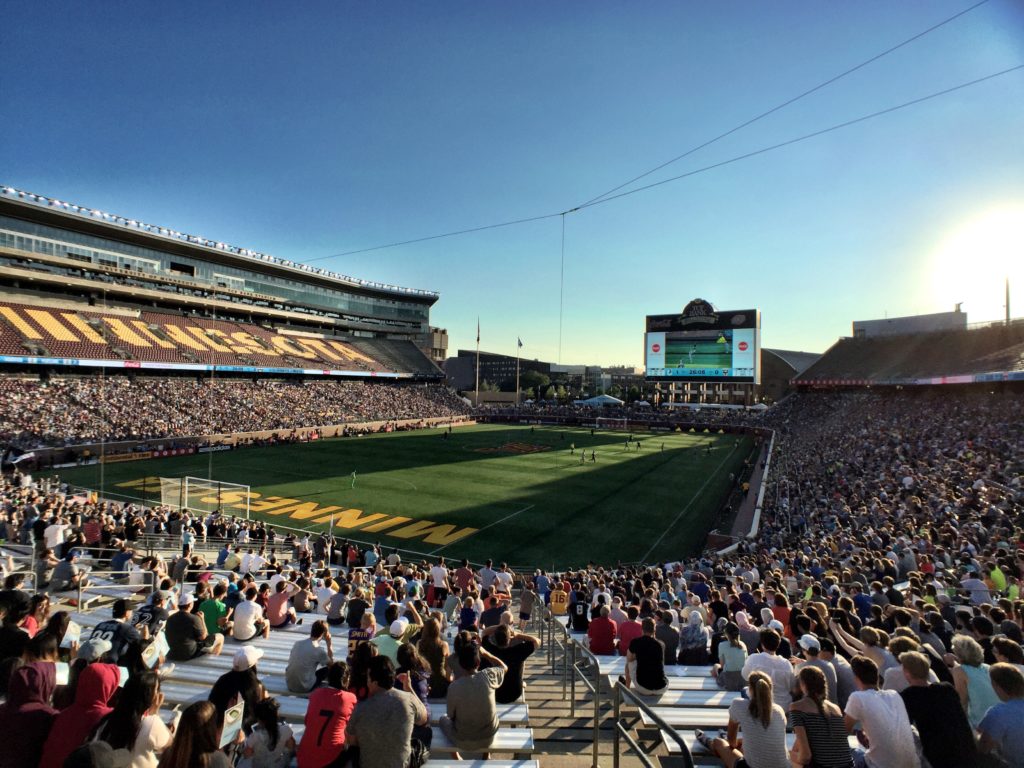With the regular season ending last night, it’s time for some quick reflections on 2018 MLS attendance. The bottom line: things didn’t end up as badly as some feared after a slow start to the season.
The 2018 season began on a down note, with only 20,810 fans per match after the first 98 matches of the season. That compares with an average of 21,039 fans per match after the first 90 games of 2017, a year that saw the per-game average end up at 22,147. Bad weather that affected the entire sporting scene was one of the factors in the lower 2018 numbers (MLB attendance was down roughly 6 percent in the same time period). And while MLB attendance rebounded, so did MLS attendance: at the end of the day, 2018 MLS attendance was down just 1 percent over 2017.
How the final numbers rebounded was the result of several factors. First, let’s begin with the unstoppable force that is Mercedes-Benz Stadium and Atlantic United FC. Off of a record-breaking 2017, Atlanta United upped the ante and grew attendance with a 10 percent bump, to 53,002 fans per game. Every game attracted close to capacity crowds, no matter whether the upper levels were opened for matches. Could Atlanta United be the first MLS team to attract a million fans in a season? It may depend on how often Atlanta United opens the entire stadium.
In terms of the biggest attendance boost, the 2018 MLS winner was Minnesota United, scoring a 16 percent hike over 2017. Part of the rise was the anticipation of a new stadium in 2019 (buy your 2018 season tickets to get first crack at the best Allianz Field seating) and part is the success of Minnesota United to turn a game into a true event. The team certainly didn’t shine on the field, but the family-friendly marketing ended up attracting a demographic that didn’t normally turn out for professional sports. Interestingly, TCF Bank Stadium worked pretty well as a soccer stadium, but we can’t wait to see Allianz Field.
Also scoring a double-digit percentage rise in per-game attendance: LA Galaxy, up 10 percent over 2017.
Not every team had a great 2018, of course. In the midst of controversy over the future of the team, Columbus Crew per-game attendance declined by 19 percent despite a late-season surge after the possibility of the team staying in Ohio emerged. Chicago Fire saw a 15 percent decline as well: the team’s marketing strategy is focused on a winning squad, and a losing squad failed to draw. New York Red Bulls saw a 12 percent drop in per-game attendance: early-season weather issues dug a hole for the team. D.C. United saw an overall decline of 1 percent in per-game attendance, but that can be attributed to the decision to wait until Audi Field opened to schedule the majority of the home schedule. Audi Field was a success, and you can expect those numbers to rise.
What will we see in 2019? Minnesota United numbers will be down, as Allianz Field’s capacity is under 20,000. D.C. United’s numbers will go up, if trends at the end of 2018 are any indication. The addition of FC Cincinnati will undoubtedly be a boost as well: the team put up some significant numbers in USL in 2018 and is set up to make an impact in MLS. Many established MLS teams—New England Revolution, Seattle Sounders, Montreal Impact, Toronto FC—were down significantly in 2018, and the league can’t rely on new and expansion teams to generate growth.

